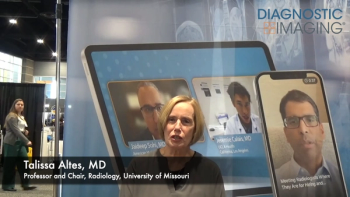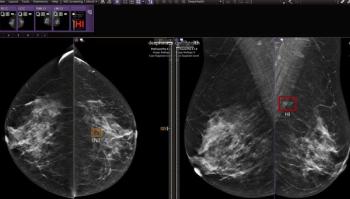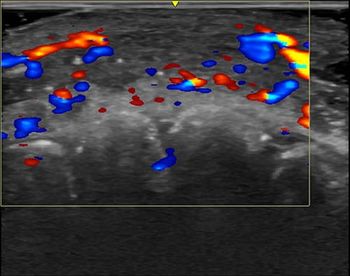
Peripheral unit for fMRI debuts at ISMRM and ASNR meetings
Functional MRI got a boost in late April with the commercial launch of the Integrated Functional Imaging System-Standalone (IFIS-SA) developed by MRI Devices. The turnkey product, composed of an MRI head coil, audio and visual stimulator, and image
Functional MRI got a boost in late April with the commercial launch of the Integrated Functional Imaging System-Standalone (IFIS-SA) developed by MRI Devices. The turnkey product, composed of an MRI head coil, audio and visual stimulator, and image processing workstation, is designed to support the visualization and analysis of MRI studies based on blood oxygen level dependent (BOLD) contrast.
The system was officially launched as a clinical product at the annual meeting of the American Society of Neuroradiology (April 21 to 27 in Boston) and the meeting of the International Society for Magnetic Resonance in Medicine (April 21 to 27 in Glasgow, Scotland). It is compatible with 1.5-tesla scanners from GE, Siemens, and Marconi and has been used experimentally with several 3-tesla units.
Until now, fMRI has been largely a research tool. Clinical studies indicate, however, that fMRI could play an important role in the diagnosis of neurological disorders, including epilepsy, Alzheimer’s disease, and Parkinson’s disease, as well as in planning surgery and monitoring patient recovery from stroke.
Possibly assisting this transition from research to clinical tool is the development of an integrated fMRI product. GE Medical Systems offers its own fMRI hardware-software solution, and other MRI vendors bundle some fMRI software with their scanners. In many cases, however, sites have themselves cobbled together the various components needed to conduct these studies-essentially a head coil interfaced with visual, audio, or tactile stimulators and software controllers and processors.
“We have put together a system that does it all for everybody,” said William Jace Dinehart, manager of functional imaging business at MRI Devices. “You don’t have to mess with interface boxes or figuring out what talks to what. Just roll it out and plug it in. You’re ready to do functional imaging in less than two hours.”
MRI Devices is selling the product through its own direct sales force, but it is also exploring possible OEM-supplier arrangements under which the system could be privately labeled by an MRI vendor. MRI Devices has 15 units operating at research sites. Since FDA clearance was gained on March 15, about a half dozen orders have been taken.
IFIS-SA is made up of an LCD video display, headphones, patient microphone, head stabilization unit, and a pair of button-activated hand-response units that convey patient responses to stimulation. Data flow through fiber-optic cable to and from a workstation.
Early development was done by Psychology Software Tools, which sold the technology to MRI Devices. The current owner supplies a high-resolution head coil as part of the integrated package, but the other components of IFIS-SA can be adapted to work with competing head coils, according to Dinehart. Doing so knocks about $30,000 off the $100,000 list price but involves a trade-off.
“Our head coil gives about a 100% signal-to-noise improvement in the periphery, where the BOLD response is usually located,” Dinehart said.
IFIS-SA quantifies and visualizes small susceptibility changes in the human brain that occur when the patient is executing specific tasks, orchestrated through the use of visual or auditory stimuli, for example. BOLD images showing these susceptibilities are laid over anatomical images to enhance the diagnostic process, according to the company. Statistical algorithms are also employed to assist in the analysis.
As clinical uses evolve from what is now a research-oriented environment, MRI Devices plans to streamline the product. Efforts are already under way to make the system easier to use through increased automation.
“We are going to integrate the system more tightly-produce some wizards so the technologist can take an order for a functional imaging workup, hit a button, get the data, and get them analyzed-all in a controlled way,” he said.
Newsletter
Stay at the forefront of radiology with the Diagnostic Imaging newsletter, delivering the latest news, clinical insights, and imaging advancements for today’s radiologists.




























